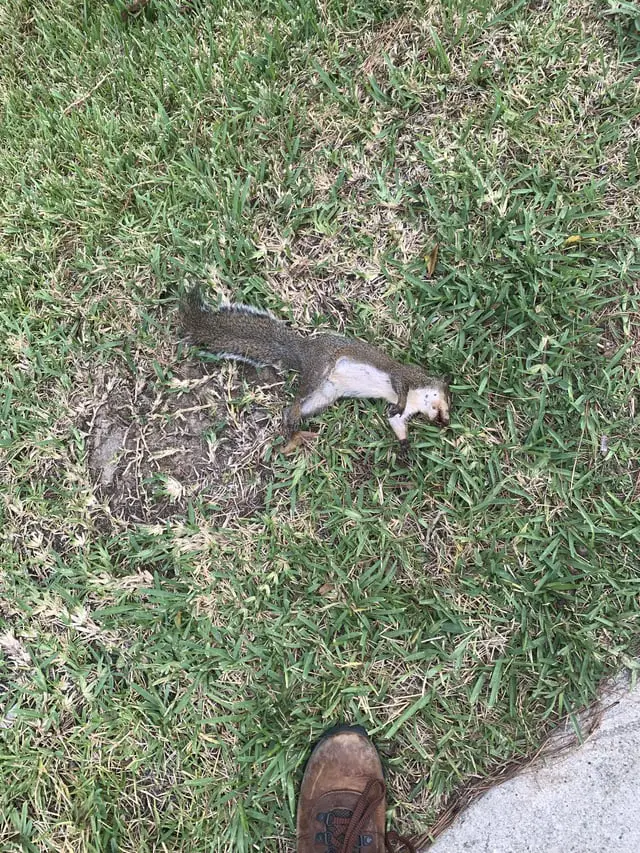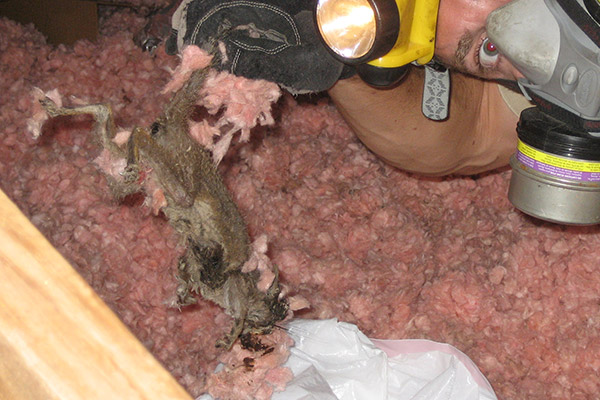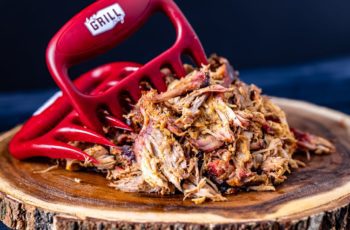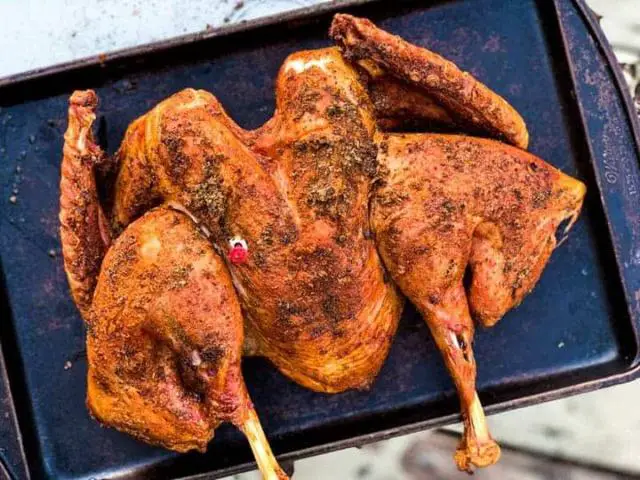
To safely dispose of a dead squirrel, wear gloves and place it in a sealed plastic bag. Contact local animal control for guidance.
Discovering a dead squirrel can be unsettling, but it’s crucial to handle the situation properly. Proper disposal ensures safety and prevents the spread of diseases. First, always wear gloves to avoid direct contact with the animal. Place the squirrel in a sealed plastic bag to contain any potential pathogens.
Check with local animal control or waste management services for specific disposal guidelines. Some areas may allow you to dispose of the bag in regular trash, while others might require special handling. Prompt and careful action will help maintain a clean and safe environment for everyone.
Assess The Situation
Finding a dead squirrel can be unsettling. Before acting, it’s crucial to assess the situation. This ensures you handle the squirrel safely and effectively.
Check For Signs Of Life
First, observe the squirrel closely. Look for any movement or breathing. Sometimes, a seemingly dead squirrel might just be stunned.
- Gently poke the squirrel with a stick.
- Check for any twitching or eye movement.
- If there are signs of life, consider contacting a wildlife rehabilitator.
Evaluate Surroundings
Next, inspect the area around the squirrel. This helps identify potential hazards or reasons for its death. It also ensures your safety while handling the situation.
- Look for nearby predators or aggressive animals.
- Check for any visible traps or poisons.
- Notice if there are more dead animals nearby.
By evaluating the surroundings, you can take necessary precautions. This is important for both your safety and the local ecosystem.
Safety Precautions
Wear Protective Gear
Wear gloves and a mask.
Use disposable tools.
Avoid breathing in particles.
Avoid Direct Contact
Avoid touching the squirrel.
Use a shovel to handle it.
Wash hands thoroughly after.
Legal Considerations
When dealing with a dead squirrel, it’s crucial to understand the legal considerations. Proper handling ensures you follow the law and avoid penalties. This section covers essential aspects such as local wildlife laws and permits and regulations.
Local Wildlife Laws
Local wildlife laws vary by region. It’s important to know your local rules. Some areas have strict guidelines on handling dead animals. Check with your local wildlife agency for specific details. They can provide the most accurate information.
Permits And Regulations
You may need a permit to handle a dead squirrel. Permits ensure that handling is done safely and legally. Contact your local government office to learn about required permits. They will guide you through the process.
Regulations may also dictate how to dispose of the squirrel. Some areas allow burial, while others require incineration. Always follow the prescribed methods to stay within the law.
Here’s a quick reference table for common permits and regulations:
| Action | Permit Required | Regulation |
|---|---|---|
| Handling Dead Squirrel | Yes | Contact Local Wildlife Agency |
| Disposal Method | Depends on Area | Check Local Guidelines |
Understanding these legal considerations helps you act responsibly and legally. It ensures the safety of you and your community.

Credit: www.squirrelcontrol.ca
Removal Methods
Dealing with a dead squirrel can be unpleasant. But, knowing the proper removal methods can make the task easier. Below, we discuss different techniques to safely and efficiently remove a dead squirrel from your property.
Using Tools
Using the right tools is crucial for safe removal. Here are some essential tools:
- Gloves: Always wear gloves to protect your hands from germs.
- Shovel: A shovel helps to lift the squirrel without touching it.
- Trash Bags: Use heavy-duty trash bags for disposal.
- Disinfectant: Clean the area with a disinfectant after removal.
Disposal Options
After removing the squirrel, you must dispose of it properly. Here are some disposal options:
- Trash Disposal: Place the squirrel in a sealed trash bag. Dispose of it in your regular trash bin.
- Burial: If allowed, bury the squirrel in your yard. Ensure the hole is deep enough to prevent other animals from digging it up.
- Animal Control: Contact your local animal control for assistance. They may have specific disposal guidelines.
Choose the method that is most convenient and appropriate for your situation.
Handling The Carcass
Finding a dead squirrel can be alarming. It’s important to handle the carcass properly to avoid any health risks. This section will guide you through the steps of bagging the squirrel and transporting safely.
Bagging The Squirrel
First, put on disposable gloves. These will protect your hands from germs. Next, place a plastic bag on the ground. Carefully pick up the squirrel by the tail or a leg. Put the squirrel in the bag gently. Try to avoid any contact with its body. If the bag is thin, use a second bag for extra safety. Seal the bag tightly to prevent any leaks.
Transporting Safely
Once the squirrel is bagged, you need to dispose of it properly. Here are some steps to follow:
- Check your local regulations for dead animal disposal.
- Place the bagged squirrel in a secure container.
- Transport the container to the appropriate disposal site.
Always wash your hands thoroughly after handling the carcass. Use soap and warm water for at least 20 seconds.
Sanitizing The Area
After removing a dead squirrel, it is crucial to sanitize the area. This ensures no harmful bacteria or unpleasant smells remain. Proper sanitization helps maintain a healthy environment.
Cleaning Supplies
Gather the necessary cleaning supplies before starting the sanitization process.
- Disposable gloves
- Trash bags
- Paper towels or rags
- Disinfectant spray or bleach solution
- Bucket of warm water
Use disposable gloves to protect your hands. Ensure you have enough trash bags to dispose of contaminated materials. Paper towels or rags will help in wiping surfaces. A disinfectant spray or a bleach solution is essential for killing germs. Warm water aids in cleaning the area.
Disinfecting Procedures
Follow these steps to disinfect the area properly.
- Wear your disposable gloves.
- Remove any visible debris with paper towels.
- Dispose of the paper towels in a trash bag.
- Spray the area with disinfectant or bleach solution.
- Let it sit for 10 minutes.
- Wipe the area with clean rags or paper towels.
- Dispose of used rags in a trash bag.
- Repeat if necessary for thorough cleaning.
After completing these steps, your area should be clean and safe. Remember to wash your hands thoroughly after removing the gloves.
Emotional Impact
Finding a dead squirrel can be an emotional experience. It may stir feelings of sadness, guilt, or even confusion. This section will explore the emotional impact and provide helpful suggestions.
Coping Mechanisms
Dealing with the loss of a squirrel can be tough. Here are some coping mechanisms to help you manage your emotions:
- Talk to a friend or family member.
- Write about your feelings in a journal.
- Engage in a calming activity, like drawing or reading.
- Take a walk in nature to clear your mind.
Memorial Ideas
Creating a memorial for the squirrel can help you find closure. Here are some memorial ideas:
- Plant a tree or flower in its honor.
- Create a small garden space.
- Paint a rock and place it in your yard.
- Make a scrapbook with pictures and memories.
| Memorial Idea | Materials Needed |
|---|---|
| Plant a tree | Tree sapling, soil, water |
| Create a garden | Plants, soil, gardening tools |
| Paint a rock | Paint, rock, brushes |
| Make a scrapbook | Photos, paper, stickers |

Credit: www.reddit.com
Preventing Future Incidents
Finding a dead squirrel can be distressing. Preventing future incidents is essential. This section covers deterrent methods and wildlife-friendly practices.
Deterrent Methods
Effective deterrent methods can keep squirrels away from your property. Here are some ways to deter them:
- Install fences: Use squirrel-proof fencing around gardens.
- Use repellents: Apply natural repellents like cayenne pepper.
- Trim trees: Keep tree branches away from your roof.
- Secure trash: Make sure garbage bins are tightly closed.
- Block entry points: Seal holes and gaps in your home.
Wildlife-friendly Practices
Adopting wildlife-friendly practices ensures harmony with nature. Here are some tips:
- Plant native plants: Native plants attract natural predators.
- Provide water sources: Set up bird baths or small ponds.
- Create shelters: Build nesting boxes for birds.
- Promote biodiversity: Encourage a variety of species in your garden.
- Avoid pesticides: Pesticides can harm beneficial wildlife.
Implementing these methods can help prevent future squirrel incidents. It also promotes a healthier ecosystem.

Credit: animalatticpest.com
Frequently Asked Questions
How To Safely Dispose Of A Dead Squirrel?
To safely dispose of a dead squirrel, wear gloves and place it in a plastic bag. Seal the bag tightly and place it in your regular trash. Wash your hands thoroughly afterwards.
Can You Bury A Dead Squirrel?
Yes, you can bury a dead squirrel. Dig a hole at least three feet deep to prevent scavengers from digging it up. Ensure the burial site is away from water sources.
Is It Illegal To Move A Dead Squirrel?
Laws vary by location. Generally, it is not illegal to move a dead squirrel. Check local wildlife regulations for specific rules in your area.
What Diseases Can Dead Squirrels Carry?
Dead squirrels can carry diseases like rabies, tularemia, and leptospirosis. Handle them with care and use protective gear to minimize risk.
Conclusion
Dealing with a dead squirrel can be challenging. Always prioritize safety and hygiene. Use gloves and proper disposal methods. Contact local authorities for guidance. Remember, handling wildlife requires care. Following these steps ensures a safe and respectful solution. Stay informed and act responsibly for a healthier environment.
Learn More About Grilling
If you want to learn more about grilling, check out these other helpful resources!






